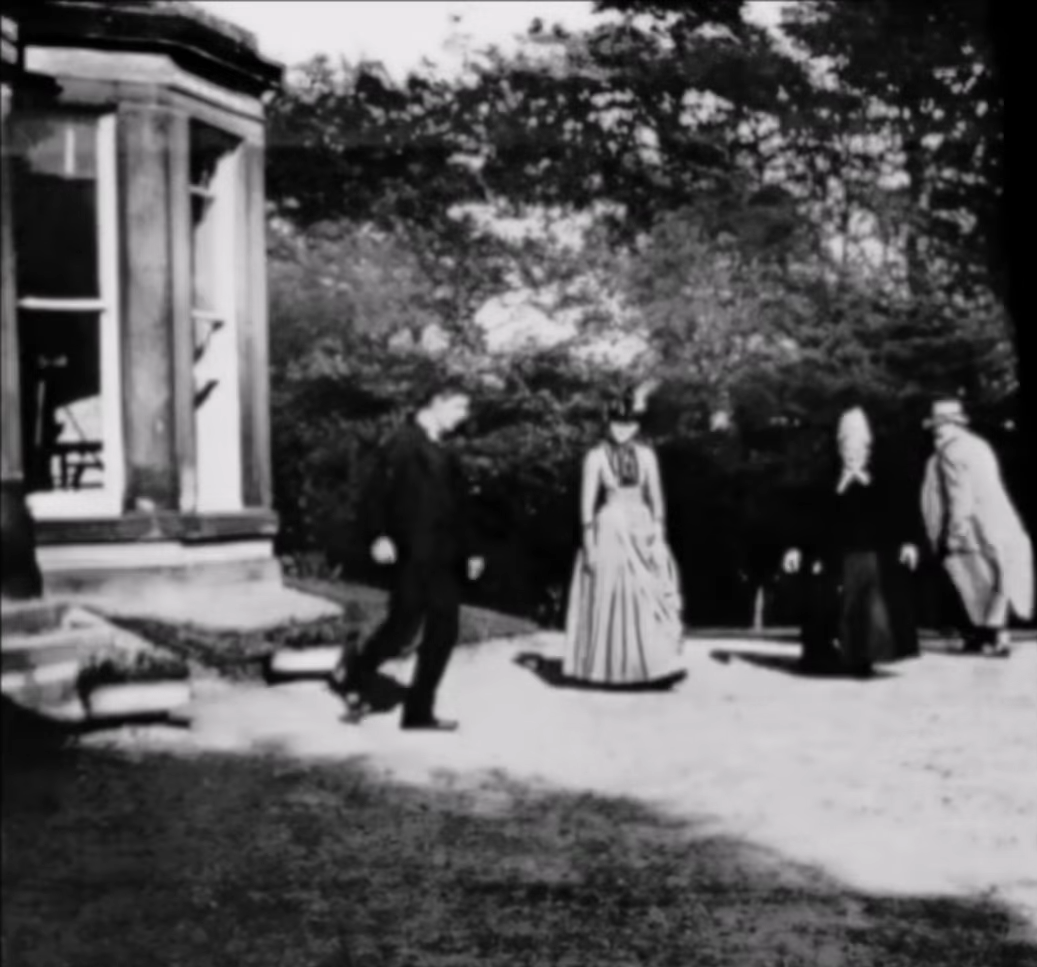|
Zozo (film)
''Zozo'' is a drama film which was released to cinemas in Sweden on 2 September 2005. The film was selected as the official Swedish entry for the Best Foreign Language Film at the 78th Academy Awards, but it was not nominated. Plot ''Zozo'' tells the story of a Lebanese boy (Imad Creidi), during the civil war, who gets separated from his family and ends up in Sweden. Production The film was directed by Swedish-Lebanese director Josef Fares. The story is mostly inspired by Fares' real life immigration to Sweden during the war. The film was Sweden's representative for Best Foreign film at the 78th Academy Awards. It won The Nordic Council Film Prize in 2006. See also * List of submissions to the 78th Academy Awards for Best Foreign Language Film This is a list of submissions to the 78th Academy Awards for Best Foreign Language Film. The Academy of Motion Picture Arts and Sciences has invited the film industries of various countries to submit their best film for the Acade ... [...More Info...] [...Related Items...] OR: [Wikipedia] [Google] [Baidu] |
Swedish Language
Swedish ( ) is a North Germanic languages, North Germanic language from the Indo-European languages, Indo-European language family, spoken predominantly in Sweden and parts of Finland. It has at least 10 million native speakers, making it the Germanic_languages#Statistics, fourth most spoken Germanic language, and the first among its type in the Nordic countries overall. Swedish, like the other North Germanic languages, Nordic languages, is a descendant of Old Norse, the common language of the Germanic peoples living in Scandinavia during the Viking Age. It is largely mutually intelligible with Norwegian language, Norwegian and Danish language, Danish, although the degree of mutual intelligibility is dependent on the dialect and accent of the speaker. Standard Swedish, spoken by most Swedes, is the national language that evolved from the Central Swedish dialects in the 19th century, and was well established by the beginning of the 20th century. While distinct regional Variety ( ... [...More Info...] [...Related Items...] OR: [Wikipedia] [Google] [Baidu] |
The Nordic Council Film Prize
The Nordic Council Film Prize is an annual film prize administered by the Nordic Council. The Nordisk Film & TV Fond is the funding body that administers the prize. History The first award was handed out in 2002 to celebrate the Nordic Council's 50th anniversary. Since 2005 the prize has been annual. In 2023, Greenland submitted a film for the first time with ''The Edge Of The Shadow'', directed by Malik Kleist. Description The Nordisk Film & TV Fond is secretariat to the Nordic Council. It is funded by 22 partners: the Nordic Council of Ministers; five national film institutes; and 16 public and private media companies. It also funds the Nordisk Film & TV Fond Prize at the annual Gothenburg Film Festival. One winner is chosen from submissions from the five Nordic countries. In 2008, the prize money of the Nordic Council Film Prize was €47,000. According to the Nordic Council, the prize is given for "the creation of an artistically original film that is rooted in Nordic cultu ... [...More Info...] [...Related Items...] OR: [Wikipedia] [Google] [Baidu] |
Films Set In Sweden
A film, also known as a movie or motion picture, is a work of visual art that simulates experiences and otherwise communicates ideas, stories, perceptions, emotions, or atmosphere through the use of moving images that are generally, since the 1930s, synchronized with sound and (less commonly) other sensory stimulations. Etymology and alternative terms The name "film" originally referred to the thin layer of photochemical emulsion on the celluloid strip that used to be the actual medium for recording and displaying motion pictures. Many other terms exist for an individual motion-picture, including "picture", "picture show", "moving picture", "photoplay", and "flick". The most common term in the United States is "movie", while in Europe, "film" is preferred. Archaic terms include "animated pictures" and "animated photography". "Flick" is, in general a slang term, first recorded in 1926. It originates in the verb flicker, owing to the flickering appearance of early films. ... [...More Info...] [...Related Items...] OR: [Wikipedia] [Google] [Baidu] |
Films Set In Lebanon
A film, also known as a movie or motion picture, is a work of Visual arts, visual art that simulates experiences and otherwise communicates ideas, stories, perceptions, emotions, or atmosphere through the use of moving images that are generally, since the 1930s, Sound film, synchronized with sound and (less commonly) other sensory stimulations. Etymology and alternative terms The name "film" originally referred to the thin layer of photochemical emulsion on the celluloid strip that used to be the actual Recording medium, medium for recording and displaying motion pictures. Many other terms exist for an individual motion-picture, including "picture", "picture show", "moving picture", "photoplay", and "flick". The most common term in the United States is "movie", while in Europe, "film" is preferred. Archaic terms include "animated pictures" and "animated photography". "Flick" is, in general a slang term, first recorded in 1926. It originates in the verb flicker, owing to ... [...More Info...] [...Related Items...] OR: [Wikipedia] [Google] [Baidu] |
Films Directed By Josef Fares
A film, also known as a movie or motion picture, is a work of visual art that simulates experiences and otherwise communicates ideas, stories, perceptions, emotions, or atmosphere through the use of moving images that are generally, since the 1930s, synchronized with sound and (less commonly) other sensory stimulations. Etymology and alternative terms The name "film" originally referred to the thin layer of photochemical emulsion on the celluloid strip that used to be the actual medium for recording and displaying motion pictures. Many other terms exist for an individual motion-picture, including "picture", "picture show", "moving picture", "photoplay", and "flick". The most common term in the United States is "movie", while in Europe, "film" is preferred. Archaic terms include "animated pictures" and "animated photography". "Flick" is, in general a slang term, first recorded in 1926. It originates in the verb flicker, owing to the flickering appearance of early films. ... [...More Info...] [...Related Items...] OR: [Wikipedia] [Google] [Baidu] |
Films About Families
A film, also known as a movie or motion picture, is a work of visual art that simulates experiences and otherwise communicates ideas, stories, perceptions, emotions, or atmosphere through the use of moving images that are generally, since the 1930s, synchronized with sound and (less commonly) other sensory stimulations. Etymology and alternative terms The name "film" originally referred to the thin layer of photochemical emulsion on the celluloid strip that used to be the actual medium for recording and displaying motion pictures. Many other terms exist for an individual motion-picture, including "picture", "picture show", "moving picture", "photoplay", and "flick". The most common term in the United States is "movie", while in Europe, "film" is preferred. Archaic terms include "animated pictures" and "animated photography". "Flick" is, in general a slang term, first recorded in 1926. It originates in the verb flicker, owing to the flickering appearance of early films ... [...More Info...] [...Related Items...] OR: [Wikipedia] [Google] [Baidu] |
Films About Children
A film, also known as a movie or motion picture, is a work of visual art that simulates experiences and otherwise communicates ideas, stories, perceptions, emotions, or atmosphere through the use of moving images that are generally, since the 1930s, synchronized with sound and (less commonly) other sensory stimulations. Etymology and alternative terms The name "film" originally referred to the thin layer of photochemical emulsion on the celluloid strip that used to be the actual medium for recording and displaying motion pictures. Many other terms exist for an individual motion-picture, including "picture", "picture show", "moving picture", "photoplay", and "flick". The most common term in the United States is "movie", while in Europe, "film" is preferred. Archaic terms include "animated pictures" and "animated photography". "Flick" is, in general a slang term, first recorded in 1926. It originates in the verb flicker, owing to the flickering appearance of early films. ... [...More Info...] [...Related Items...] OR: [Wikipedia] [Google] [Baidu] |
Lebanese Civil War Films
Lebanese may refer to: * Something of, from, or related to Lebanon * Lebanese people, people from Lebanon or of Lebanese descent * Lebanese Arabic, the variety of Levantine Arabic spoken in Lebanon * Lebanese culture * Lebanese cuisine See also * * List of Lebanese people This is a list of notable individuals born and residing mainly in Lebanon. This is a dynamic list and may never be able to satisfy particular standards for completeness. You can help by adding missing items. Lebanese expatriates residing overs ... {{disambig Language and nationality disambiguation pages ... [...More Info...] [...Related Items...] OR: [Wikipedia] [Google] [Baidu] |
2000s Arabic-language Films
S, or s, is the nineteenth Letter (alphabet), letter of the Latin alphabet, used in the English alphabet, the alphabets of other western Languages of Europe, European languages and other latin alphabets worldwide. Its name in English is English alphabet#Letter names, ''ess'' (pronounced ), plural ''esses''. History Northwest Semitic abjad, Northwest Semitic Shin (letter), šîn represented a voiceless postalveolar fricative (as in 'ip'). It originated most likely as a pictogram of a tooth () and represented the phoneme via the acrophonic principle. Ancient Greek did not have a "sh" phoneme, so the derived Greek letter Sigma (letter), Sigma () came to represent the voiceless alveolar sibilant . While the letter shape Σ continues Phoenician ''šîn'', its name ''sigma'' is taken from the letter ''Samekh'', while the shape and position of ''samekh'' but name of ''šîn'' is continued in the ''Ξ, xi''. Within Greek, the name of ''sigma'' was influenced by its associatio ... [...More Info...] [...Related Items...] OR: [Wikipedia] [Google] [Baidu] |





